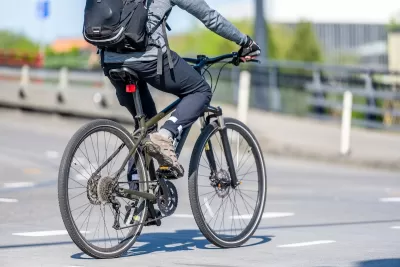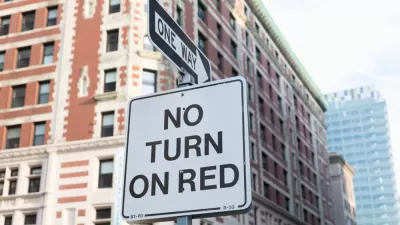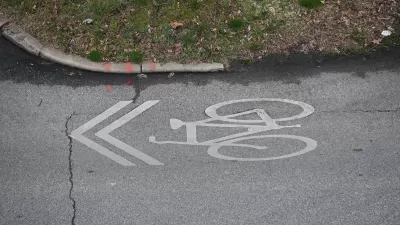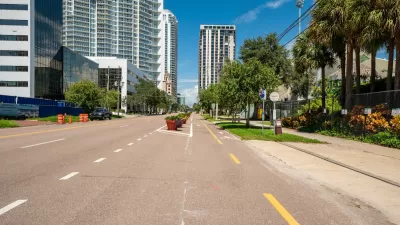Allowing cyclists to treat stop signs as yield signs does not negatively impact safety and can help people on bikes more effectively navigate roadways.

Two new studies affirm the benefits of the Bicycle Safety Stop, also known as the Idaho Stop or the bike stop-as-yield, reports Jared Sanchez in Streetsblog California.
Sanchez notes that cyclists aren’t the only ones who routinely treat stop signs as yield signs. “Of course, many people in cars also roll through stop signs when there are no other vehicles present; this is a common and logical behavior for all road users, though it carries different risks for people operating two-ton machines. For bike riders, stop-as-yield is essential for efficient riding because it conserves the momentum lost when starting after coming to a complete stop.”
One study showed that bike riders can safely navigate intersections and share the road with people in cars by treating stop signs as yields. However, “The study concluded that stop-as-yield laws would work better if states included information about them in driver handbooks — something even Idaho does not do.”
A second study revealed that almost all road users — people on bikes, walking, and in cars — reported occasionally breaking laws. While drivers and pedestrians reported flouting the law to save time, most cyclists reported they broke traffic rules for safety reasons. “Again, this study finds a need for better public education so people driving and biking can share the road safely.”
FULL STORY: New Studies Show No Downsides for Bicycle Safety Stop

Trump Administration Could Effectively End Housing Voucher Program
Federal officials are eyeing major cuts to the Section 8 program that helps millions of low-income households pay rent.

Planetizen Federal Action Tracker
A weekly monitor of how Trump’s orders and actions are impacting planners and planning in America.

The 120 Year Old Tiny Home Villages That Sheltered San Francisco’s Earthquake Refugees
More than a century ago, San Francisco mobilized to house thousands of residents displaced by the 1906 earthquake. Could their strategy offer a model for the present?

HSR Reaches Key Settlement in Northern California City
The state’s high-speed rail authority reached an agreement with Millbrae, a key city on the train’s proposed route to San Francisco.

Washington State Legislature Passes Parking Reform Bill
A bill that would limit parking requirements for new developments is headed to the governor’s desk.

Missouri Law Would Ban Protections for Housing Voucher Users
A state law seeks to overturn source-of-income discrimination bans passed by several Missouri cities.
Urban Design for Planners 1: Software Tools
This six-course series explores essential urban design concepts using open source software and equips planners with the tools they need to participate fully in the urban design process.
Planning for Universal Design
Learn the tools for implementing Universal Design in planning regulations.
Ada County Highway District
Clanton & Associates, Inc.
Jessamine County Fiscal Court
Institute for Housing and Urban Development Studies (IHS)
City of Grandview
Harvard GSD Executive Education
Toledo-Lucas County Plan Commissions
Salt Lake City
NYU Wagner Graduate School of Public Service





























